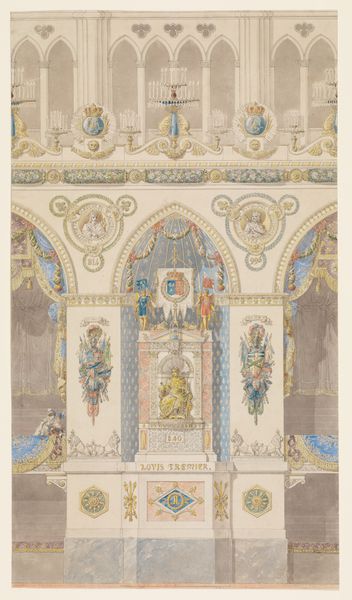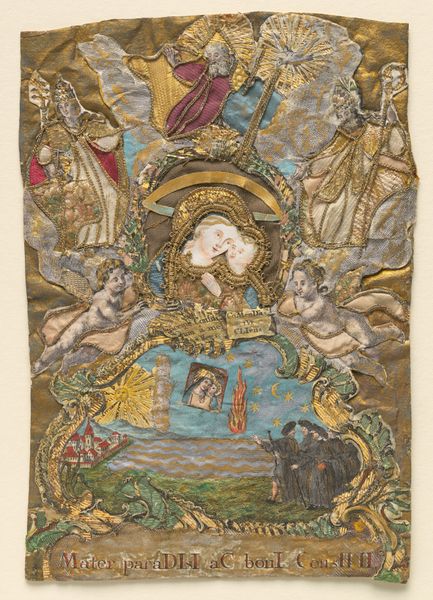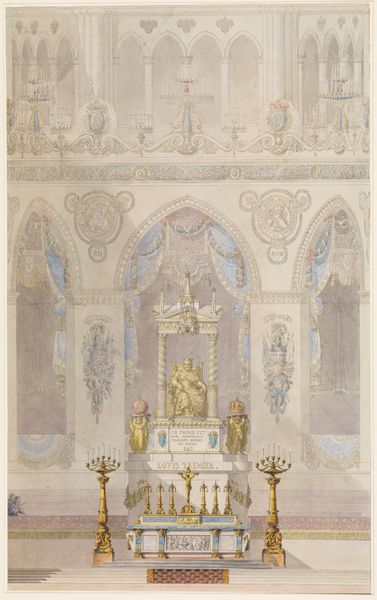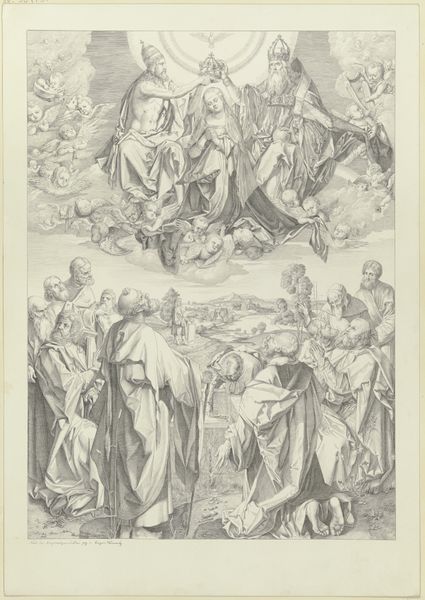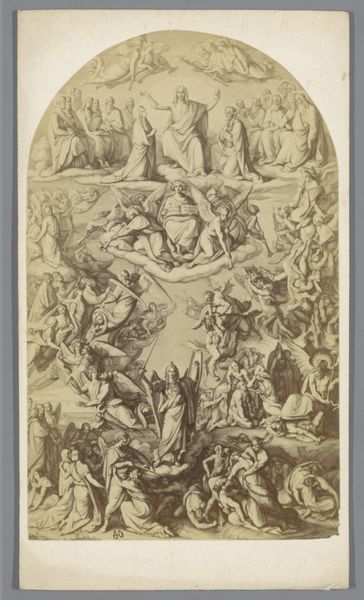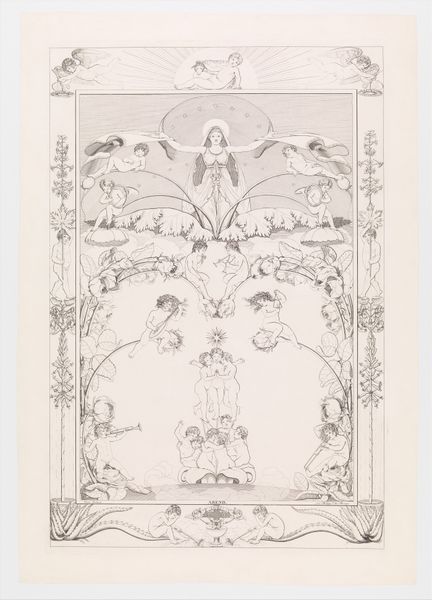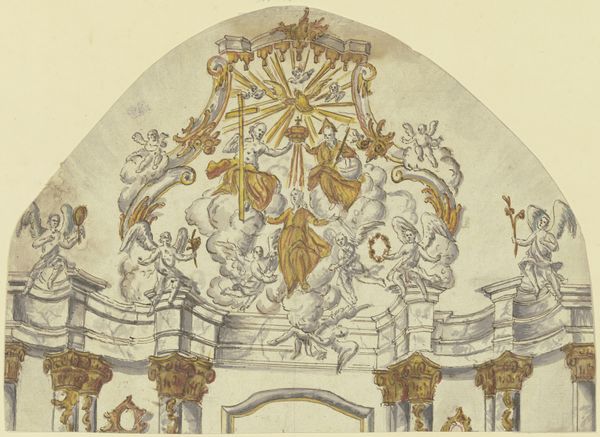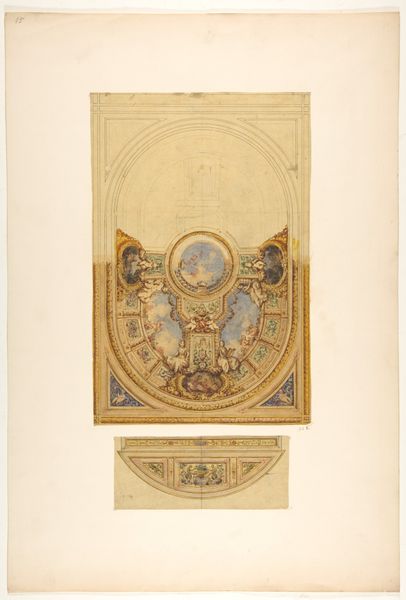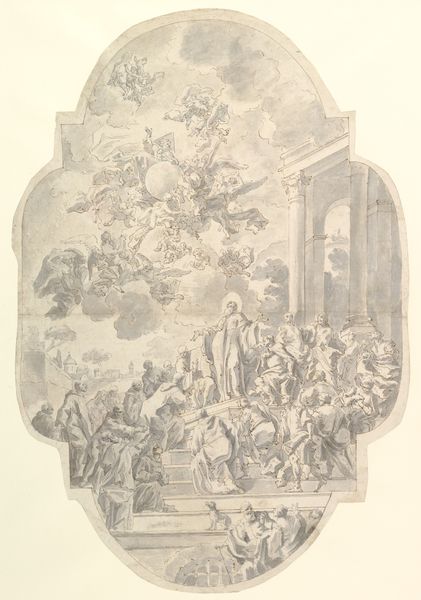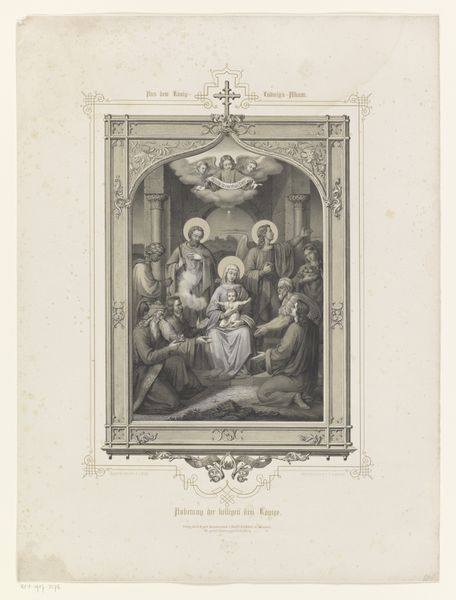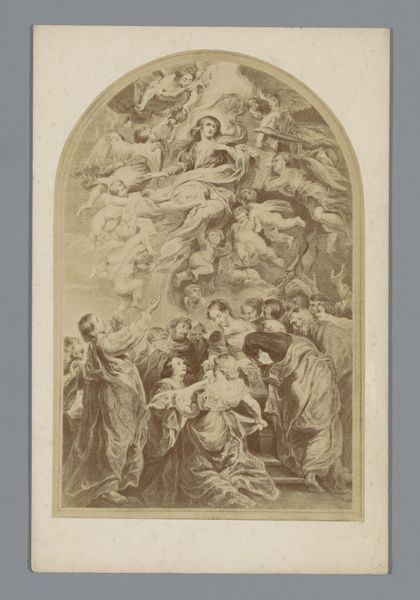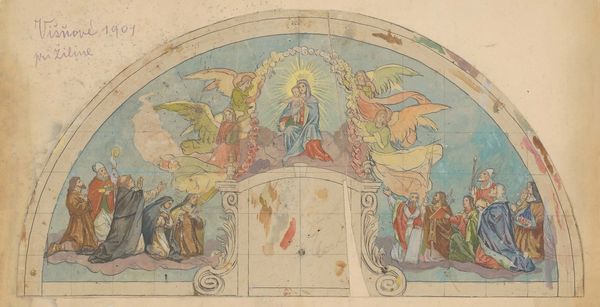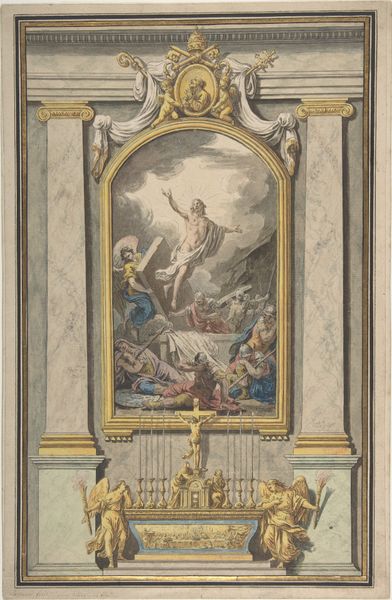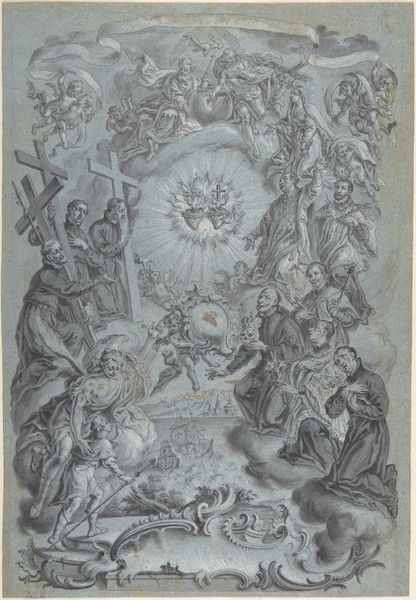
Dantes Paradies für die Ausmalung der Decke im ersten Saal der Villa Massimo in Rom
0:00
0:00
drawing, painting, watercolor, ink
#
drawing
#
16_19th-century
#
allegory
#
narrative-art
#
painting
#
figuration
#
watercolor
#
ink
#
german
#
romanticism
#
history-painting
#
academic-art
#
watercolor
Copyright: Public Domain
Editor: So, this is Philipp Veit’s “Dantes Paradies für die Ausmalung der Decke im ersten Saal der Villa Massimo in Rom”, a watercolor and ink drawing. It feels... celestial, almost theatrical. All these figures arranged around a central scene... what do you see in it? Curator: I see a fascinating dialogue between nationalism, religious allegory, and artistic aspiration. Veit, working within the Nazarene movement, sought to revive spiritual values in art amidst growing secularism. Consider how this idealized vision of Dante's Paradise, intended for a ceiling in Rome, projects a specifically German interpretation of universal themes. What power dynamics are at play when German artists seek to claim ownership over a foundational piece of Italian literature? Editor: I hadn't thought of it like that. It’s like they're translating Dante, filtering it through their own cultural lens. Is it a form of artistic colonization? Curator: Precisely. And within that translation, who gets centered and whose perspectives are marginalized? Note the racialized depictions of some figures, the hierarchical arrangements that privilege certain moral virtues over others. We have to ask, whose paradise is this truly meant to be? Editor: So it's not just about religious aspiration. It's about national identity, cultural appropriation, and power structures all wrapped into one? Curator: Absolutely. Veit's drawing embodies the complex entanglement of art, politics, and identity in the 19th century. By understanding those layers, we gain insight into not only the artwork, but the social forces that shaped it. Editor: I guess paradise isn't always as heavenly as it seems at first glance. Thank you for providing this crucial context, this definitely offers an amazing view to grasp. Curator: Indeed! It’s through interrogating these supposedly neutral artworks that we unearth hidden power structures and begin to understand the art's profound social implications.
Comments
No comments
Be the first to comment and join the conversation on the ultimate creative platform.
